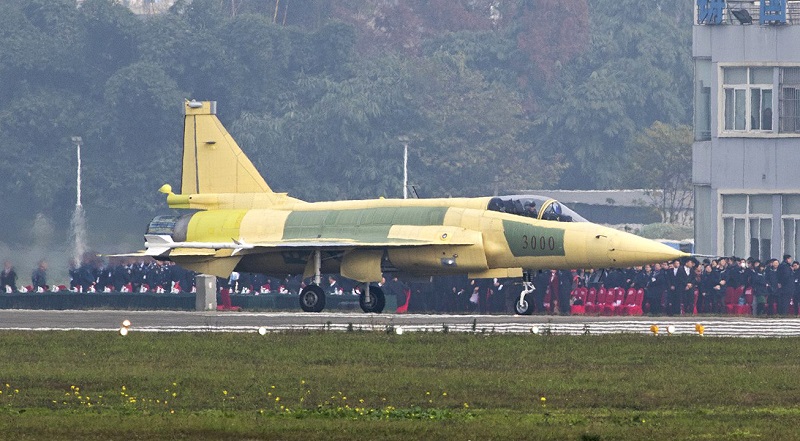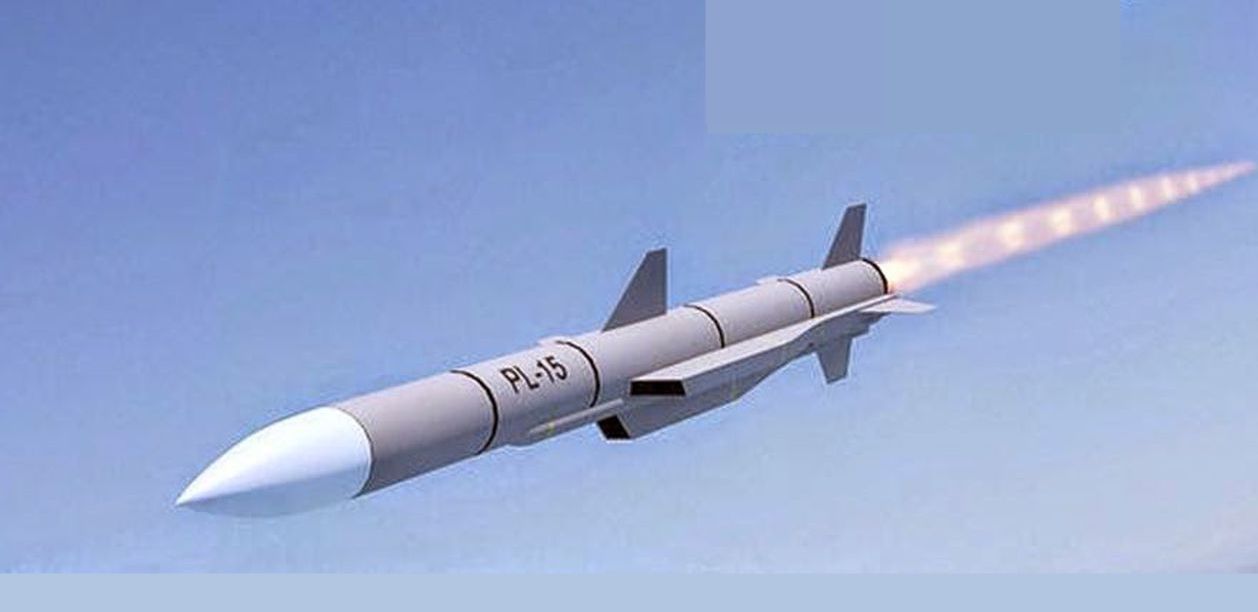JF-17 Thunder Block III Fighter Jet
– Key Features and Advancements
By Asadullah Babar - January 25, 2021

Pakistan has embarked upon the local production of JF-17 Block III fighter aircraft - a much advanced variant of the JF-17 Thunder aircraft jointly produced by Pakistan Aeronautical Complex (PAC) and China’s Chengdu Aircraft Corporation of China (CAC).
The JF-17 Block III made its maiden flight in December 2019 in Chengdu at Chengdu Aircraft Industry Group’s (CAIG) facilities. The production formally began on December 30, 2020, when Pakistan Air Force (PAF) Air Chief Marshal Mujahid Anwar Khan installed the first rivet in a ceremony at Kamra. JF-17 Thunder is a single-engine, lightweight, multirole combat aircraft and a battle-proven fighter jet.
Pakistan’s first fourth-generation jet
Block III variant of JF-17 has been described as Pakistan’s first 4+ or 4.5-generation aircraft equipped with modern radar system, upgraded sensors, enhanced avionics and software, much like the other 4.5 generation aircraft such as F-16V, Gripen NG, Rafale F-4, F-15X. The distinctive capabilities of 4.5-gen fighters include extreme maneuverability at all speeds, excellent beyond-visual-range (BVR) air combat capabilities, AESA radar, high-resolution full glass cockpit display, GPS navigation, advanced precision guided weapons, and a heavy payload of smart strike munitions.
Key features of Block III
The JF-17 Thunder Block III features:
• Holographic head-up-display (HUD).
• Fully digital fly-by-wire (electronic as opposed to manual) flight control system.
• Enhanced electronic warfare systems that incorporated an S740 Airborne Missile Approach Warning System from the J-10C.
• An integrated cockpit display made by Aviation Industry Corporation of China (AVIC) and similar to the one installed on Chinese J-10 fighter jets, has been installed.
• Advanced infrared missile approach warning system (MAWS) similar to the one used in J-10C, J-16 and J-20 fighter jets, has been used in earlier JF-17 variants as well.
• Increased payload as well as the capability to deploy more sophisticated and longer-range weapons such as PL-15 and PL-15 missiles.
• Aircraft can also carry targeting or jamming pods.
 The Block III JF-17, which incorporates numerous enhancements, made its first flight at Chengdu in mid-December 2020.
The Block III JF-17, which incorporates numerous enhancements, made its first flight at Chengdu in mid-December 2020.
Advanced Avionics
One of the major advancements is the active electronically scanned array (AESA) radar that can identify, track and engage a large number of targets, including harder to detect threats, at longer ranges with greater accuracy and speed. The addition of the advanced radar system to Block III would offer a dramatic boost in range, flexibility and improve targeting, surveillance, and other capabilities that would help PAF achieve air dominance.
Block III will possibly get the AESA radar KLJ-7A, the first-of-its-kind air-cooled AESA radar, developed by Nanjing Research Institute of Electronics Technology (NRIET) of China. Belonging to the world-class family of modern AESA radar systems, KLJ-7A will give thunder electronic warfare superiority and enhanced multi-target detection and engagement. The radar operates in the X band that enables greater detection of up to 170 kilometers and “strong anti-jamming capability.” It can reportedly track 15 targets simultaneously and engage several at the same time. The KLJ-7A active phased array radar, if commissioned, would “give the JF-17 several advantages in an aerial combat” and “tremendously extend the fighter jet's detection range”, offering it long-range detection of aircraft, says Hu Mingchun, head of NRIET in Jiangsu. The synthetic aperture technology allows effective imaging under all kinds of adverse weather conditions.
Most advanced fighter aircraft today are equipped with different versions of AESA radar technology, which is known for its early detection and jamming capabilities. JF-17 Thunder Block III will be the first fighter aircraft in Pakistan to be equipped with an AESA radar, bringing it at par with Indian Air Force’s (IAF) newly inducted Rafael jets.
Weapons and firepower
In terms of weaponry, the AESA radar technology enables Block III Thunder to carry deadly PL-15 missiles as well as the PL-10 infrared short-range missile. The active-radar guided PL-15s beyond-visual-range air-to-air missile (BVRAAM) is the same that adds firepower to advanced Chinese jet fighters like J-10C and J-20. PL-15 has a top speed of about Mach 4 and can engage targets at estimated ranges up to 150-200km. The missiles support active-electronically scanned array radar that makes evasion very difficult for engaged targets.
 PL-15 Missile
PL-15 Missile
The PL-15 missiles, compared with the Russian R-77 and the American AIM-120C, exceeds in accuracy and range, experts say. These radar-guided extended range missiles will be a real game changer, improving the operational capabilities and offering PAF a strategic edge over IAF in terms of air superiority. Block III is also capable of carrying 2000lb laser-guided, GPS guided bombs and cruise missiles on two external pylons.
Engine and thrust improvements
Another distinguishing feature of Block III variant is the possible choice of RD-93MA engine, developed by United Engine Corporation (UEC) of Russia. The RD-93MA engine is distinguished by “improved operational characteristics particularly increased thermodynamic parameters, a larger fan and an upgraded automatic power plant control system” according to the UEC. The engine’s thrust can reach 9.3 tons. The boosted thrust will allow JF-17 Block III fighters to carry more weapons and fly at higher speeds.
Asadullah is based in China and affiliated with Shanghai Jiaotong University.
















